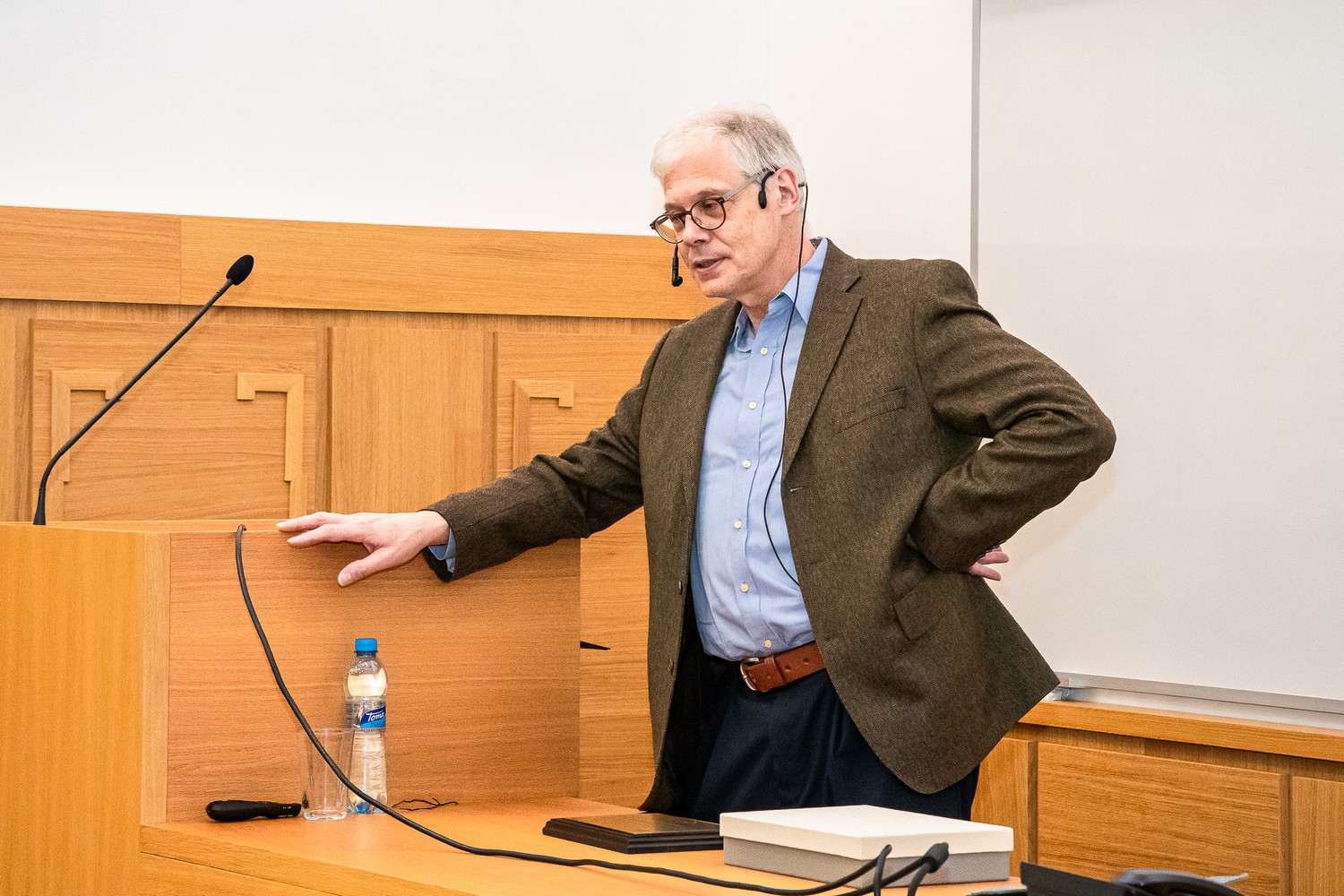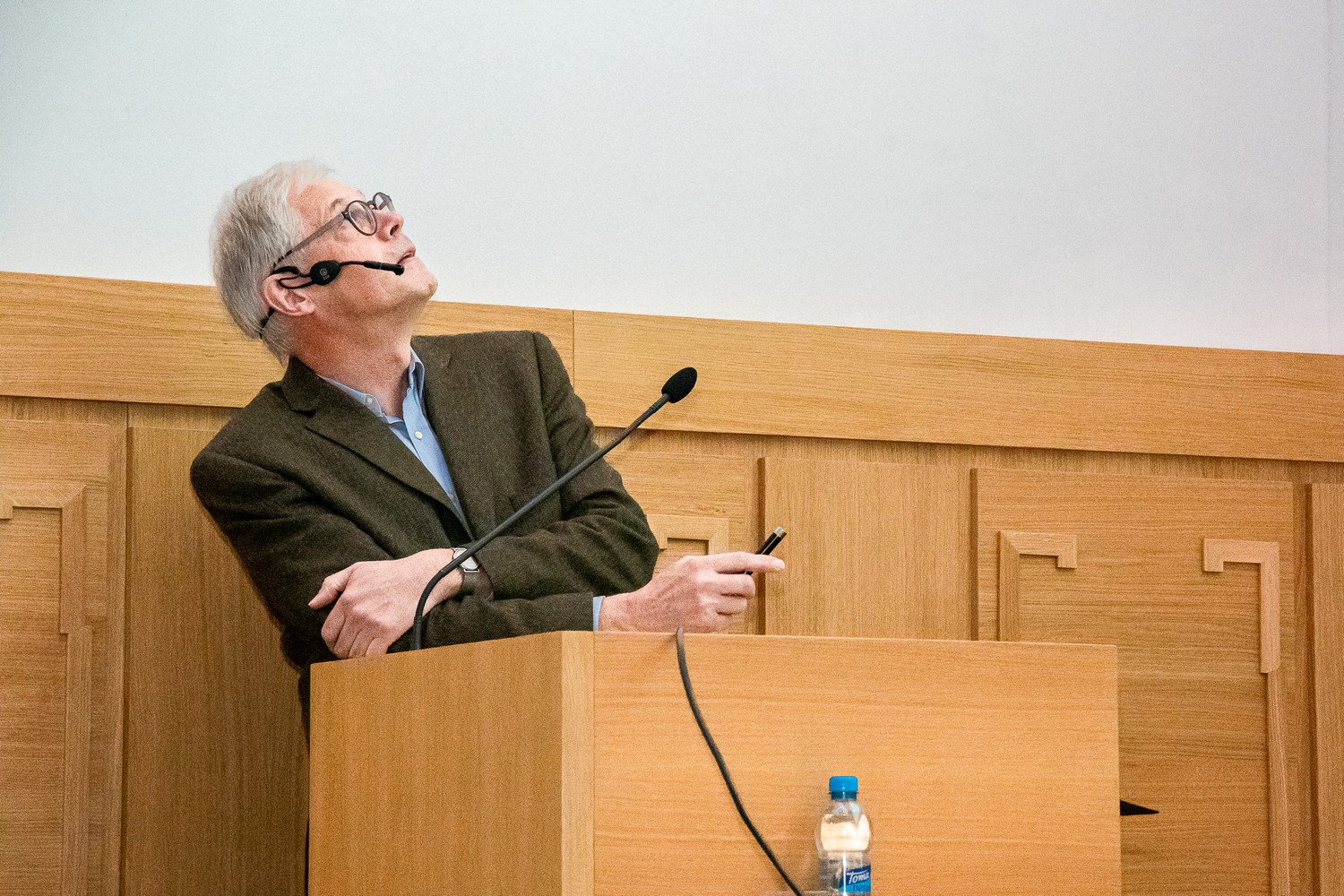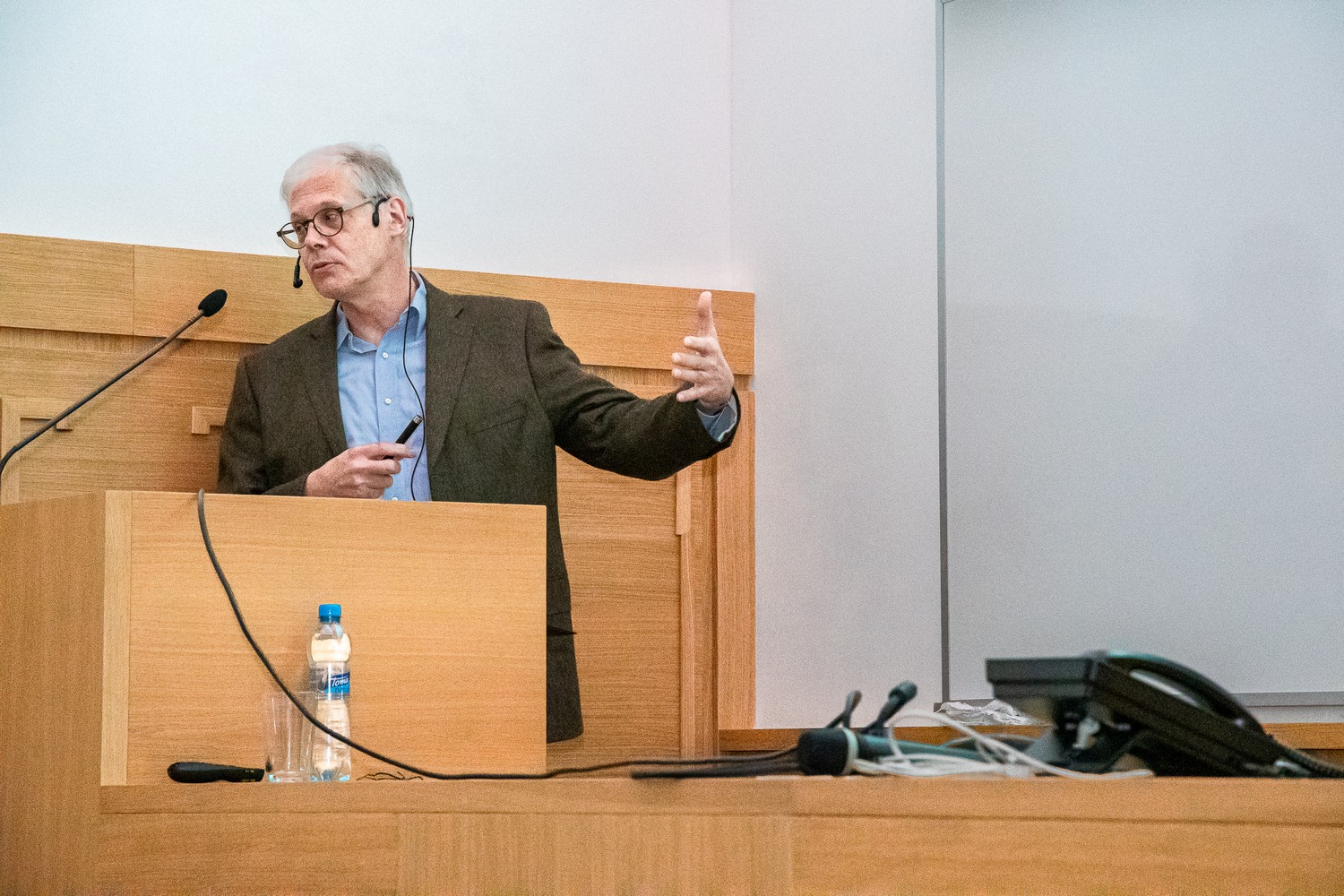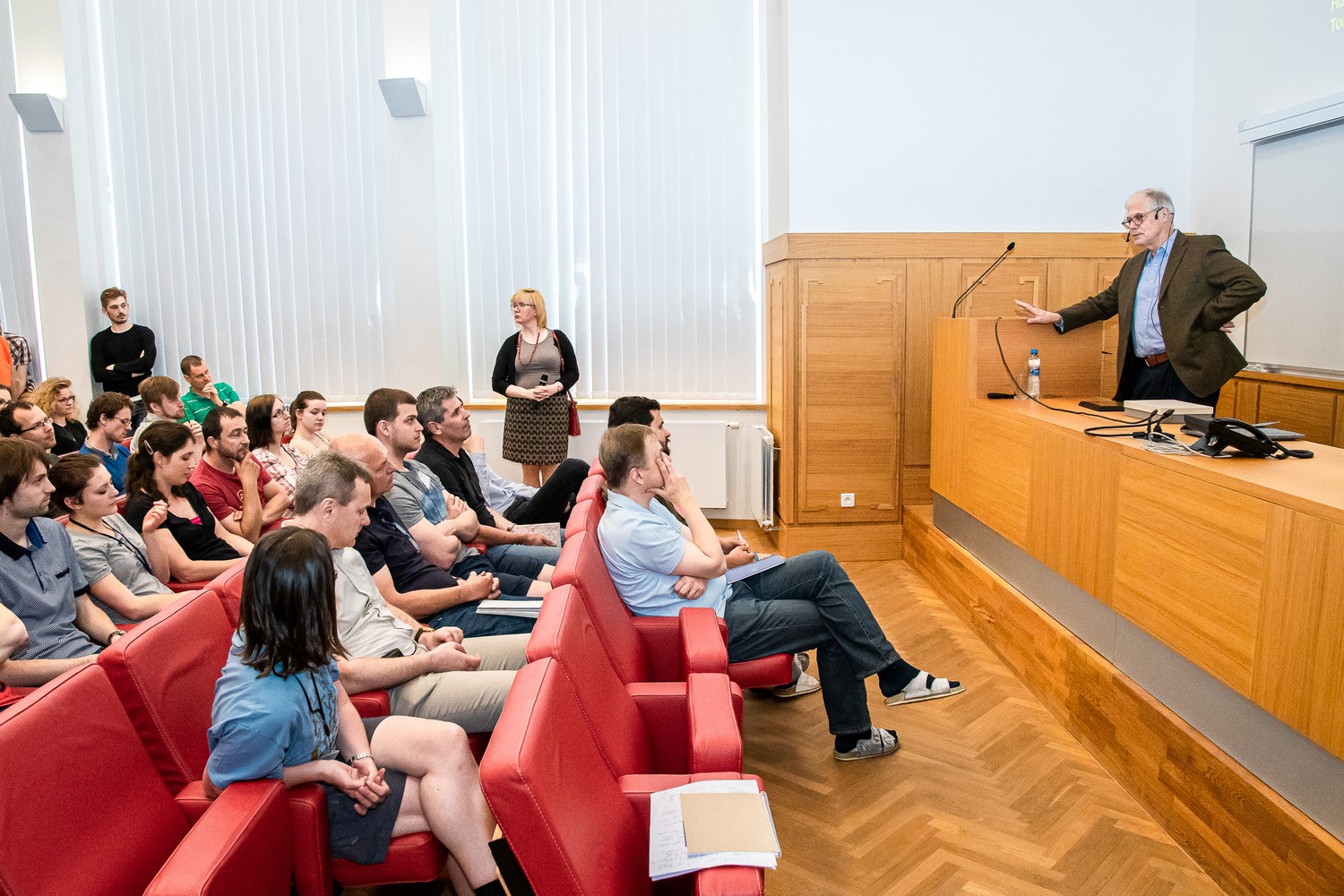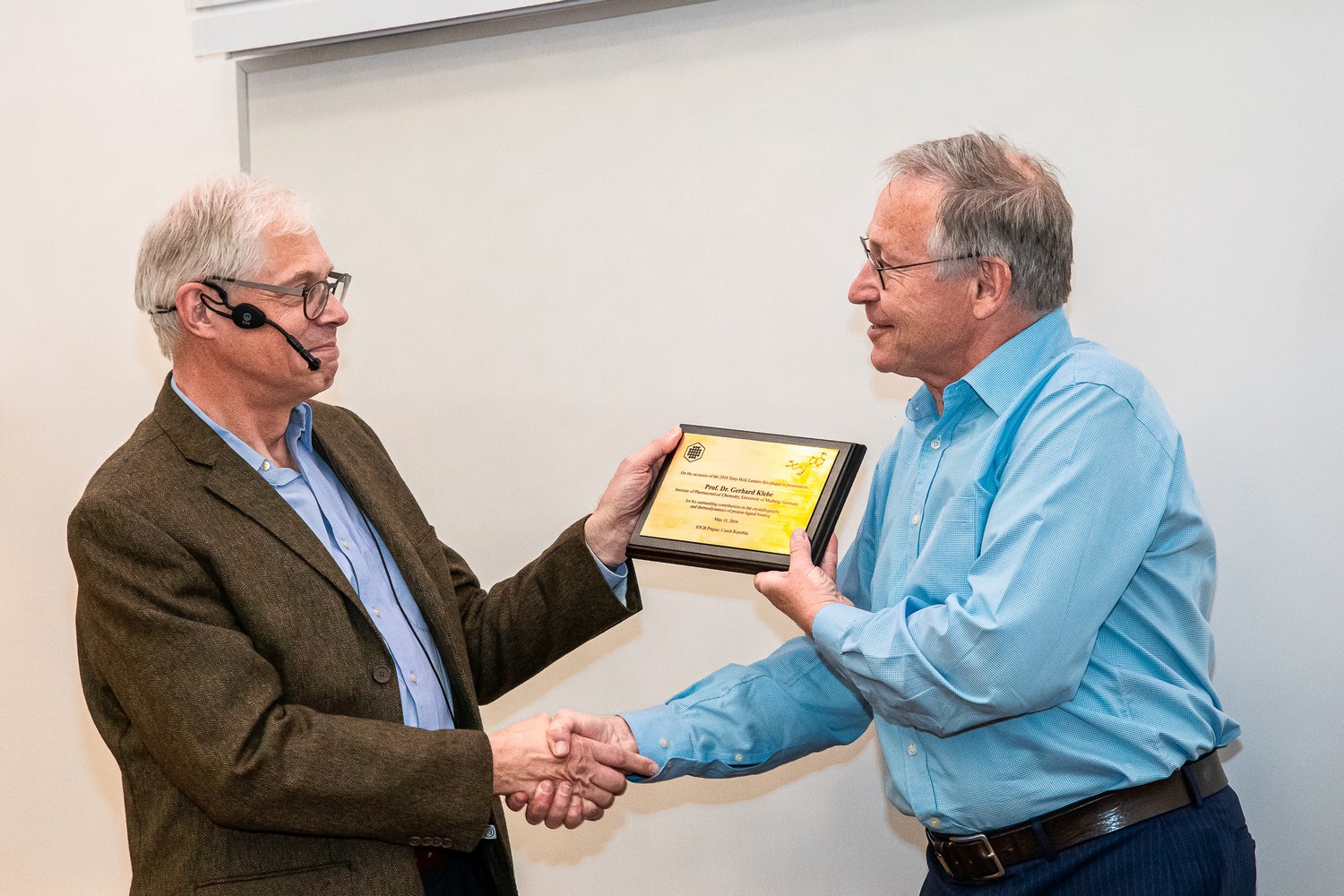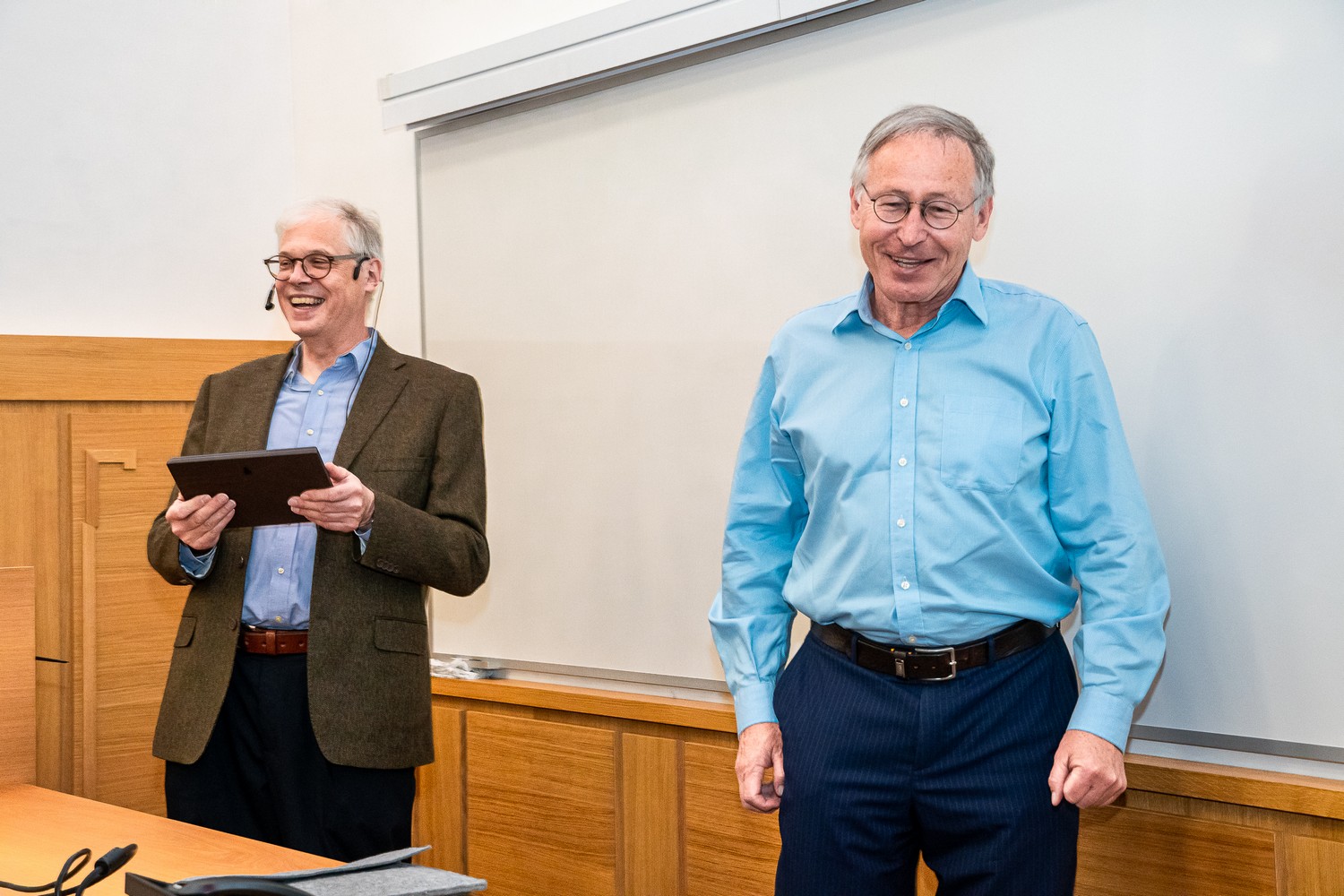Tony Holy Lecture – Gerhard Klebe
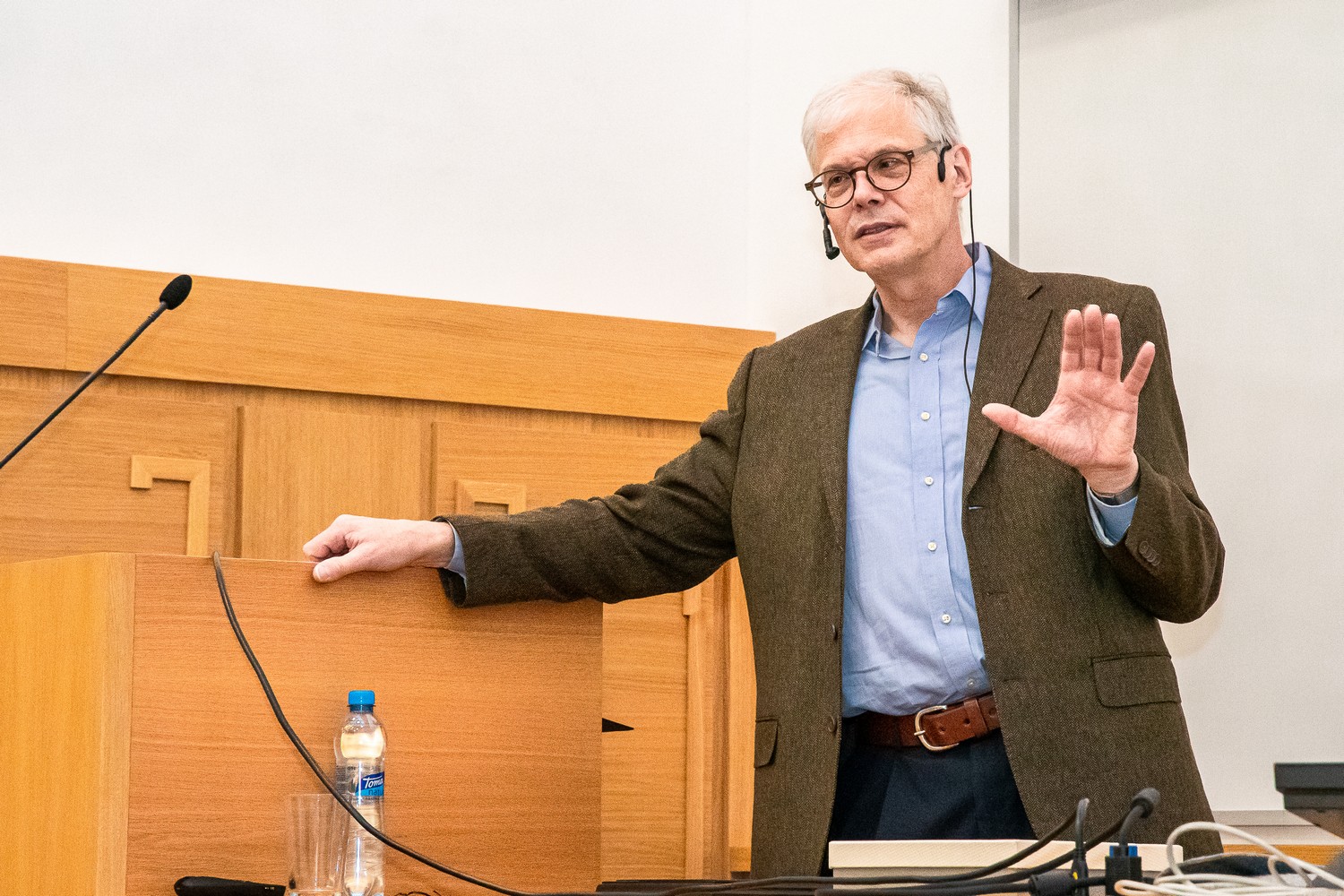
Prof. Gerhard Klebe (Institute of Pharmaceutical Chemistry, University of Marburg, Německo)
What Thermodynamics Can Help to Understand Protein-Ligand Binding in Medicinal Chemistry
11. května 2018, 10:00
Přednáškový sál ÚOCHB (budova A, 2. NP, A2.01)
Abstrakt
Small-molecule drug discovery involves the optimization of various physicochemical properties of a ligand, particularly the binding affinity for its target protein(s). In recent years, there has been growing interest in using thermodynamic profiling of protein-ligand interactions in order to select and optimize those ligands that look most promising to become a drug candidate with desirable physicochemical properties. The thermodynamics of binding are influenced by multiple factors, including hydrogen bonding and hydrophobic interactions, desolvation, residual mobility, dynamics and most importantly, the local water structure.
How well do we understand these properties on the molecular level? Is it only important that a sufficient number of hydrogen bonds is formed and the shape of the molecules fit perfectly together? How much contributes the burial of hydrophobic surface portion and how important are changes of the degrees of freedom upon complex formation? Both binding partners are conformationally flexible species and will adapt to one another upon complex formation. However, who is going to pay for these adaptations? All biological processes occur in water, thus the ubiquitously present water molecules take an important impact on protein-ligand binding, and even rearrangements of water molecules on the surface of a formed protein-ligand complex modulate the affinity of complex formation.
Structural and thermodynamic considerations help to get insight into the driving forces for complex formation. Water takes in manifold ways influence on the structure and energetics of protein-ligand complex formation. The impact of such effects is less apparent in a strong modulation of affinity (ΔG) but, owing to compensatory effects, it strongly shifts the enthalpy/entropy inventory and tunes binding kinetics. Upon ligand binding water molecules are displaced, rearranged or recruited to engage in new contacts between protein and ligand. The newly formed complex is coated by a rearranged or novel water shell. The displacement of ordered and firmly embedded water molecules results in another thermodynamic signature than the displacement of disordered, partly dynamic water molecules. In case binding occurs in empty or minor solvated but structurally stable pockets huge enthalpic contributions can be observed compared to transient pockets opened upon binding. The water networks created around exposed ligand functional groups in flat solvent-exposed pockets takes strong impact on the thermodynamic signature of the complex and seems to fine-tune binding kinetics. Optimizing such networks can improve binding affinity and surprisingly exposed hydrophobic groups seem to modulate affinity more strongly than polar groups attached to improve e.g. ligand solubility. By closely linking the results of high resolution X-ray and neutron diffraction, microcalorimetry, binding kinetics and computer simulations the determining influence of water on affinity and efficacy of ligand binding can be characterized.
Zdroje
- Biela et al., ChemMedChem, 7 (2012) 1423-1434.
- Biela et al., Angew. Chem. Int. Ed., 52 (2013) 1822-1828.
- Krimmer et al., ChemMedChem, 9(4) (2014) 833-46.
- Klebe, Nat. Rev. Drug Discov., 14 (2) (2015) 95-110.
- Rühmann et al., J. Med. Chem., 58 (2015) 6960–697.
- Neeb et al., Bioorg. Med. Chem., 24(20) (2016) 4900-4910.
- Betz et al., J. Comp. Inf. Model, 56 (1) (2016) 223–233.
- Krimmer et al., J. Med. Chem., 59 (2016) 10530–10548.
- Cramer et al., ACS Chem. Biol., 12 (2017) 225–233.
- Schiebel et al., Angew. Chem. Int. Ed., 56 (2017) 4887–4890.
- Rechlin et al., ACS Chem. Biol., 12 (2017)1397–1415.
- Krimmer et al., J. Am. Chem. Soc., 139 (2017) 10419−10431.
Fotogalerie
